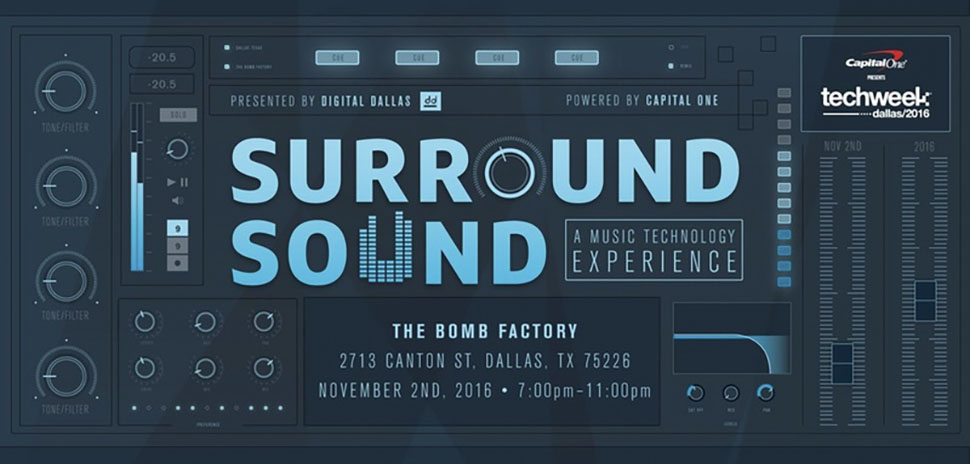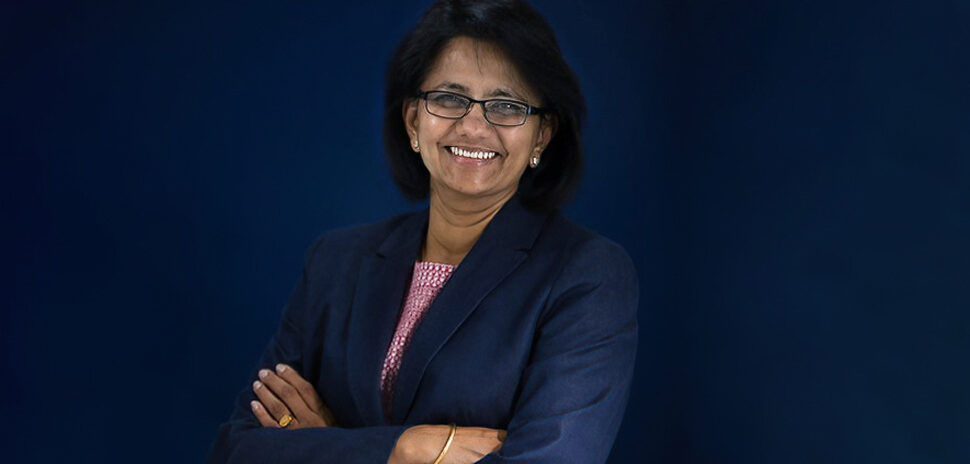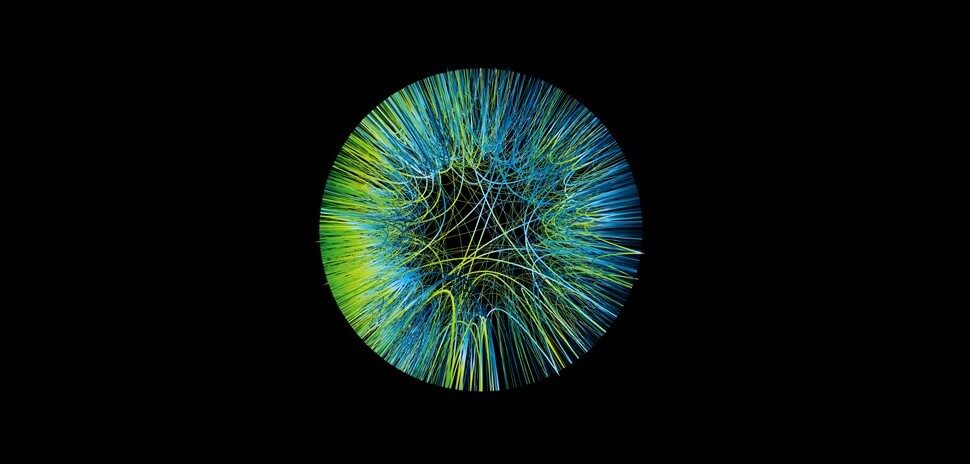Digital Dallas will be hosting its 50th event, Surround Sound, Wednesday night at The Bomb Factory in Deep Ellum.
 It will be a music technology experience, unlike a typical concert where the band kills the lights and plays their set, Pratt told Dallas Innovates in a recent interview.
It will be a music technology experience, unlike a typical concert where the band kills the lights and plays their set, Pratt told Dallas Innovates in a recent interview.
The event will feature a number of technology companies, including BlinkFX.
BlinkFX uses a platform that incorporates interactive light-up wristbands, lapel pins, and lanyards that respond in synchronization with music and other types of content, according to its website.
BlinkFX’s technology will give Surround Sound organizers a unique channel of communication with attendees.
We recently caught up with Joel Carter, founder of BlinkFX, to learn more about how the technology works.
Q+A: BlinkFX
How would you define your company/group?
First and foremost, it is a platform that has scalability with different use cases. We have developed a very inexpensive wireless platform that allows us to communicate with large quantities of receiver devices. We then instruct those devices to behave in different ways, typically through LED lighting but not always.
When we started in 2013, we saw some tech in the market that needed to be improved and perfected. Within 6 months of deciding to advance the market, we caught Doritos as a sponsor and LL Cool J as an artist. We went from obscurity to center stage in a short time window.
We didn’t really understand the implications until we dove into the market. Now we understand all the many ways we can go with our technology.
What sets you apart from others in your field?
We look around the marketplace and pay attention to what can be improved upon. Examples such as the xylobands of the 2012 Coldplay tour was one of the earliest of people using these interactive LED wristbands. As most electronic geeks do, we took it apart immediately. When we looked at it, we thought couldn’t we do more?
One of the first things Coldplay complained loudly to the press about was that the tour was one of the most fun tours they ever did, but one of the least profitable.
When we dissected one of the wristbands of that tour we realized it was a $2 chip that’s only being used to turn one color on and off. They’re flipping one bit to turn a LED on and off.
We thought WOW there’s so much more that can be done.That opened up a lot of use cases that we hadn’t even anticipated.
Tell us about the technology you’ll be using at Surround Sound.
We’re excited to be rolling out a brand new version of our firmware and software control system that allows us to address a lot of personal wearable wristbands.
We’ll be using some of this randomization technology to be able to select people at random in the crowd. That way we can choose people who are going to win a VIP upgrade at random.
How will your technology influence the music and live performances? What major changes do you foresee in the future?
One of the goals we have now is to put live performers in control of creating experiences for the audience. How cool would it be that when the performer reaches down and bumps the person on the front row it ripples through the crowd virally?
We’ve done a lot of work in the EDM space and it’s very much about one or two people onstage commanding sixty-thousand people. Empowering the DJ to do something on the fly and unique is really cool.
We want to put power in the hands of each performer so that they can impact a show in a unique way. We’ve got the technology, it just needs to be refined and packaged a bit. We already have experience in handing the controller to someone on stage and being able to paint the crowd in light.
So it’s not too big a stretch to say let’s do this viral wave technology.
What do you hope attendees take away from your contribution to Surround Sound?
I hope they see that it’s more than just a visual gag. We’ve been doing concert lighting for many decades and these wristbands could fall into a category as just another stage light.
For those attending, I hope they believe that as an individual, they had a unique experience. For example, if they were the only person whose wristband lit up, got upgraded to VIP without knowing that would happen. That’s an exciting unique experience through BlinkFX.
We want to show some uses cases where it’s more than just eye candy.
Is there anything else people should know about Surround Sound or your company?
I have more of a general comment for entrepreneurs.
There were a hundred times that I said we should quit or that were just not going to be able to do this. In those times, we dug a little deeper and we were able to power through.
It takes an incredible amount of fortitude, stubbornness, and determination to take an idea into a successful business. There were a hundred times that I said we should quit or that were just not going to be able to do this. In those times, we dug a little deeper and we were able to power through.
That’s a really important thing for Techweek. That also goes for those who work in a big company. It’s almost more difficult sometimes to fight through the bureaucracy and lack of creativity because big companies don’t like to take risks. For the companies that are good at it; they embrace their failures, they fail fast and they move on. That’s not always the culture for small and large companies.
You have to love failing and keep at it.
This interview has been condensed and edited for clarity.
READ NEXT
Surround Sound: Where Music and Technology Unite at Techweek
Delivering what’s new and next in Dallas-Fort Worth innovation, every day. Get the Dallas Innovates e-newsletter.

































